#native cottagecore
Text

🪻🌱🐝 💜 🌿 ✨ // violets & violet miner bees // part of my natives + pollinators series // gouache on paper
tiny violet miner bees (Andrena violae) are a specific pollinator: they pollinate wood & dog violets in the Northeast, and show a strong preference for blue violets. letting your grassy yard rewild itself and grow violets every spring not only lets you make violet syrup, it also gives violet miner bees their most important food source and increases local pollinator diversity.
#my art#gouache#illustration#painting#art#cottagecore#artists on tumblr#botanical#spring#violet#pollinator#pollinators#native wildflowers#native plants#eco lawn#botanical illustration#violet miner bee#bees#cw: insects#insects
816 notes
·
View notes
Text
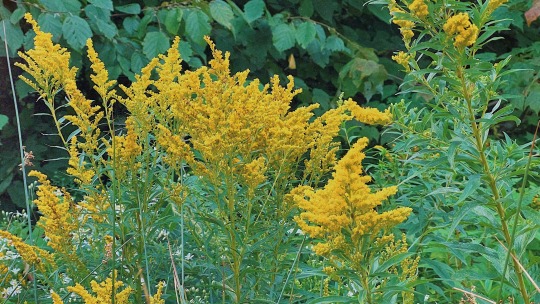
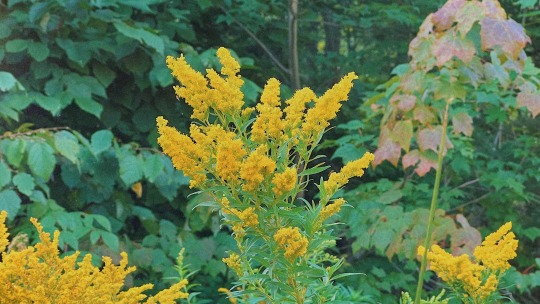

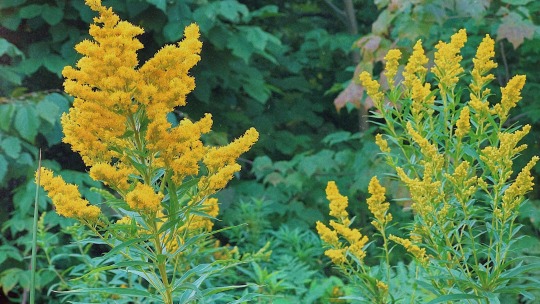
Goldenrods
22-Aug-2023
#goldenrod#yellow flower#plantblr#gardencore#nature#wildflowers#nature photopragpy#native wildflowers#herbalism#cottagecore#eastern canada#flowers#floral#flora#golden rod#plants
347 notes
·
View notes
Text
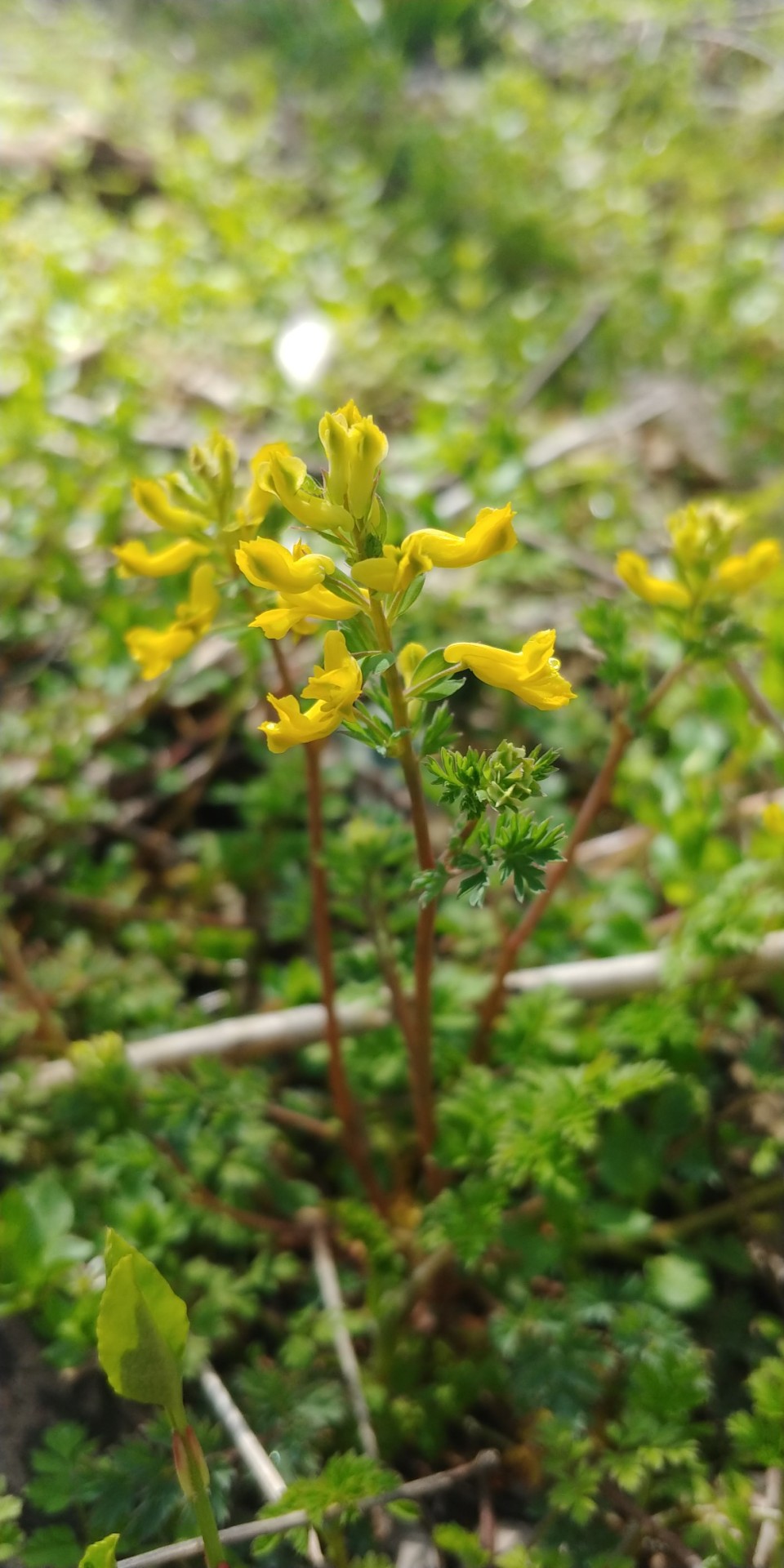
Yellow Corydalis
Corydalis flavula
March 31st, 2023
Wildwood, St. Louis County, Missouri, USA
Olivia R. Myers
@oliviarosaline
#nature#botany#plants#spring flowers#native plants#native flowers#wildflowers#wildflower#forest#woods#forest floor#fairycore#fairy core#forests#forest flowers#Corydalis#yellow Corydalis#fairy flowers#yellow flowers#spring#the ozarks#ozarks#Missouri#Missouri nature#little flowers#cottagecore#hiking#Missouri woods#exploring the woods#papaveraceae
105 notes
·
View notes
Text

#forest pixi#enchanted woodland#magic#forest#nature#witchy#woodland#fairy#witch#art#plants#nature art#whimsigoth#whimsicore#dark art#spooky cute#fairycore#cottagecore#alt aesthetic#spring beauty#spring flowers#native plants#biology#my photography#my photo#my edit#sparkle#glitter#glitch
57 notes
·
View notes
Text
Earth day is coming up! A lot of people will be hosting tree planting events, or giving away plants. This is a kind and lovey thing to do!
But let’s always make sure they are native species.
We often think “if it’s a plant, planting it is good for the earth”. But this is not the case. The health of the planet requires diverse, healthy, and functional ecosystems. And one of the most disastrous things to the health of any ecosystem is planting invasive plants. We can’t always tell if a plant will become invasive in an area, but we can know that non native plants carry that risk, and native plants do not.
And even if we plant something nonnative that doesn’t spread, we still might be creating a net- negative situation. Plants take up space, and often resources, to upkeep. Using those spaces and resources on non native plants is not helping the earth…it’s a part of what is destroying it.
So, this earth day, plant things that are native to your area 💚
49 notes
·
View notes
Text
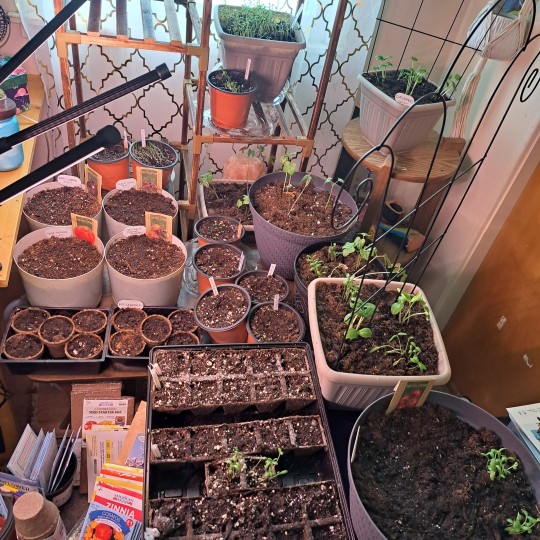

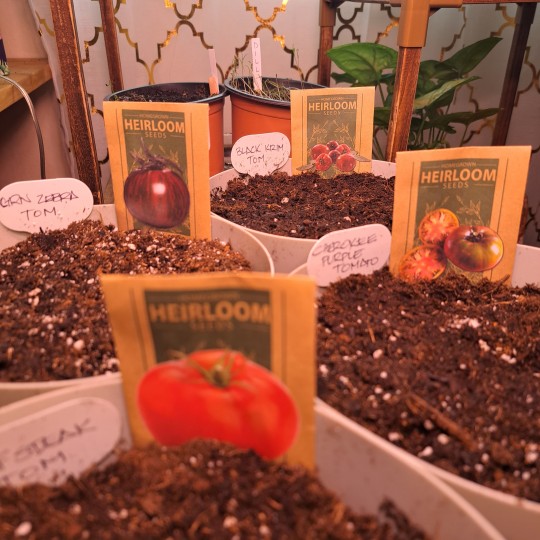


Ooooookaaaay Round 2! Transplanted all.of those morning glories that shot up into bigger pots.
Distributed Marigolds into Basil and tomato pots.
Got 8 cucumber shoots transplanted into their own pots.
Planted Hollyhock seeds and a varying variety of different tomato plants.
My craft room is over flowing!! I can't wait to get the greenhouse back up. Hopefully it will be done by April 15th!
#urban gardening#gardeners on tumblr#container gardening#urban farming#green thumb#gardenblr#cottagecore#greenblr#cottageblr#self sustainability#hollyhock#tomato plant#basil#dill#cilantro#marigolds#native wildflowers
41 notes
·
View notes
Text

large white trillium // 26 may 2023
#nature#original photography#photographers of tumblr#nature photography#trillium#wildflowers#native plants#trillium grandiflorum#puremichigan#mine#fleetingfutures#spring#may#flowercore#naturecore#greencore#cottagecore#michigan photography#michigan
35 notes
·
View notes
Text

eastern black walnut
#forest#mushrooms#mycology#botanical#botany#plants#flowers#fungi#foraging#forestcore#native plants#native wildflowers#fairycore#urban foraging#foragers#fairy grunge#botanical illustration#botanical art#street tree#cottagecore
171 notes
·
View notes
Text

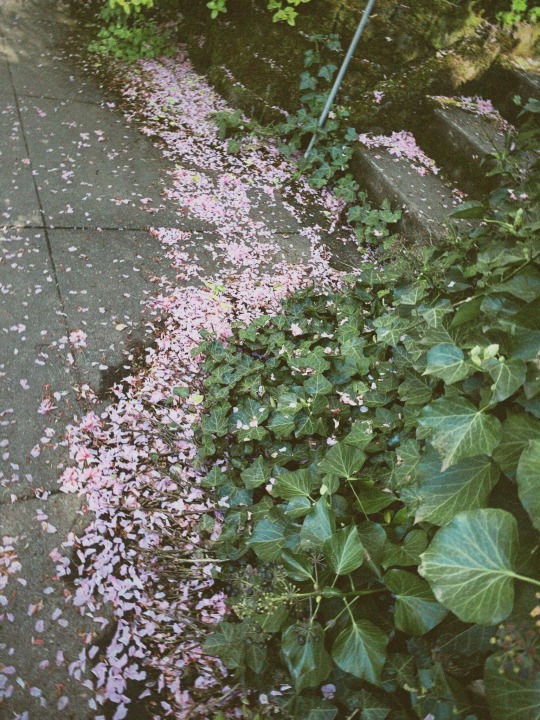
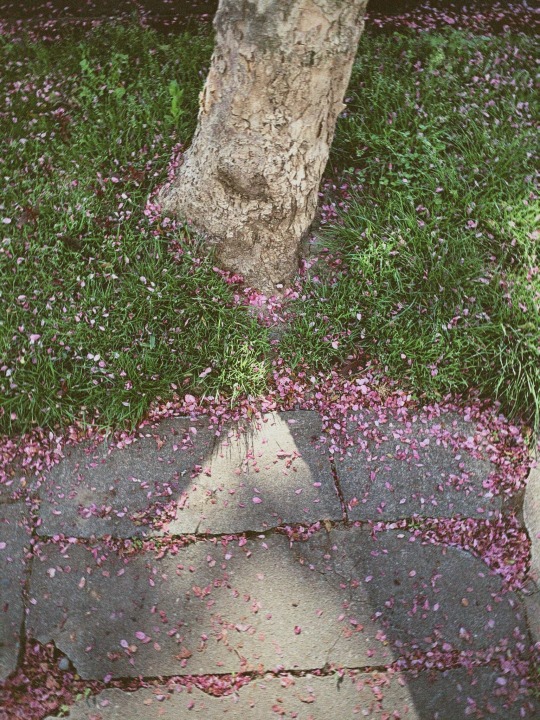

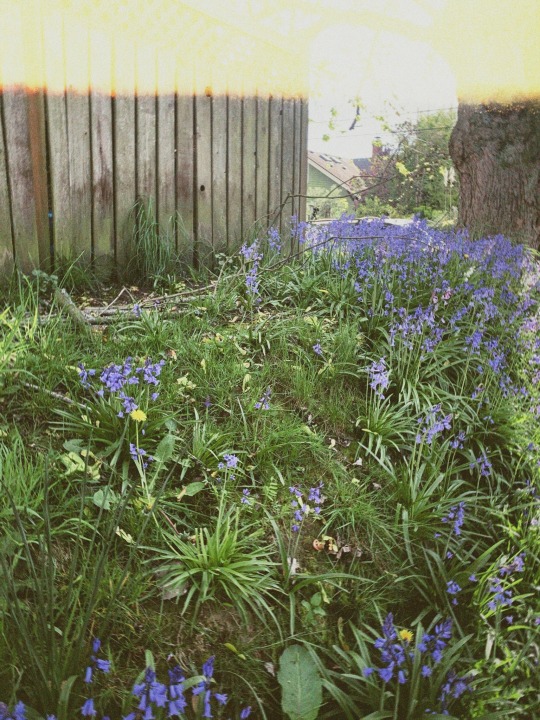

oh, what a world
#cottagecore#cozyblr#cozy aesthetic#cottage aesthetic#cozycore#photography#springcore#spring#cottagestyle#cozy#flowers#flower aesthetic#grandmacore#goblincore#nature#wildflowers#native flowers#my photography
192 notes
·
View notes
Text
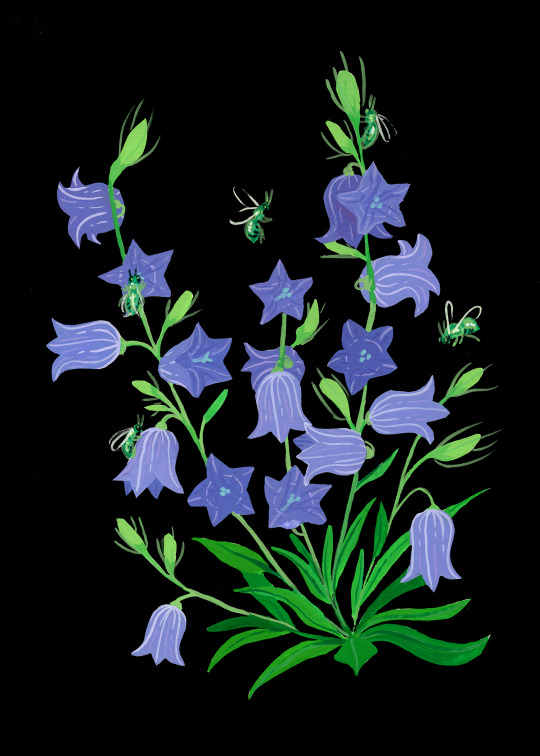
🪻🌿 🐝 🌱 ✨ // campanula & green metallic sweat bees // gouache on hot press paper // part of my native pollinators series
Tiny sweat bees are underlooked native pollinators. These solitary little guys nest in the ground and pollinate an incredibly wide array of native wildflowers and food crops, including squashes, melons, blueberries, and cranberries. They also love the bright purple bells of wild campanula!
#my art#gouache#illustration#cottagecore#artists on tumblr#art#botanical#wildflowers#native pollinators#native gardening#native plants#campanula#harebell#green metallic sweat bee#gardencore#naturecore#botanical illustration#jordan beck#jordan beck illustration#jordanillustrates
327 notes
·
View notes
Text
happy earth day!! ♻️🌎
remember, if you're going to do ecoterrorism, buy some seeds of the native plants in your area- dont use the wildflower seed packs from big box stores. you could be introducing invasive plants into your area which would actually be terrorizing your ecosystem
today is a good day to go out and appreciate the native flowers that are coming into bloom!! i have a lot of goldenrod where i live and i think its so beautiful when i see it actually get to thrive 🌿🌻

#earth day#native plants#goldenrod#flowers#plantblr#plants#botany#ecofriendly#botanicals#plant dad#plant parent#horticulture#nature#naturecore#cottagecore#nature aesthetic#forestcore#plantcore
21 notes
·
View notes
Text

#home#ferns#forest ferns#wattle fence#cottagecore#simple life#fence#garden#woodland#woods#forest living#homestead#forest dweller#green core#native plants#plants#🌿#fern#hay scented fern#maine#new england#twigs#rural#rural living#simple living#slow living#nature#gardening
123 notes
·
View notes
Text

Blue mistflower, harbinger of fall!
#gardening#gardeners on tumblr#gardencore#cottagecore#purple flowers#native plants#blue mistflower#wildflowers#september#autumn#fall
50 notes
·
View notes
Text

Sharp-lobed Hepatica
Hepatica acutiloba
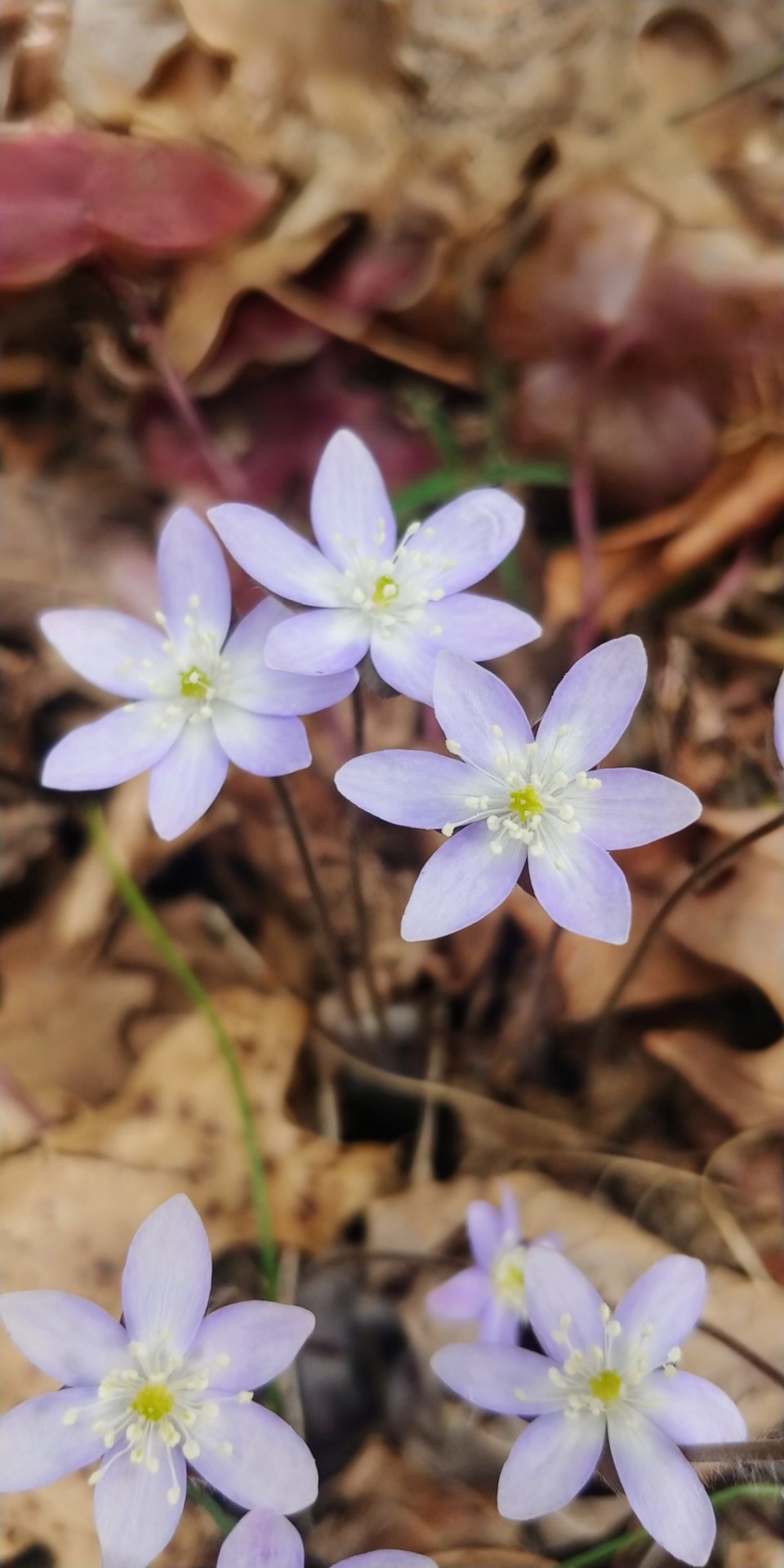
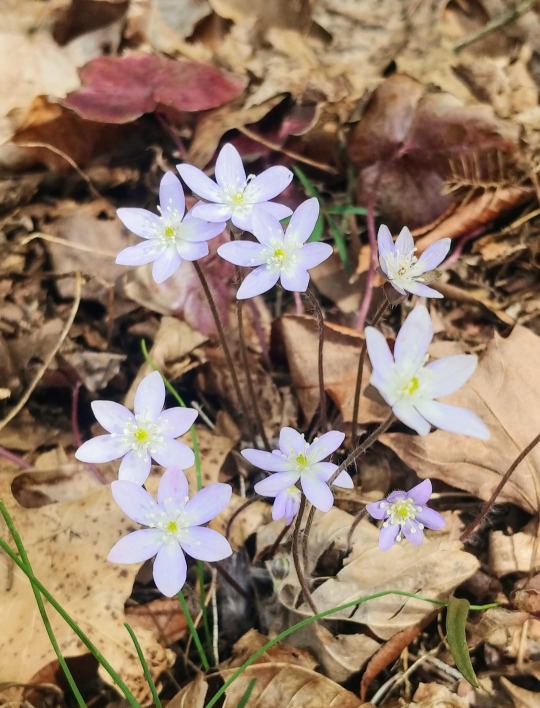
These gorgeous spring ephemerals are usually found in woods with rich, somewhat alkaline, well drained-soils across eastern North America. Their flowers can vary in color and petal count. The hepatica plants pictured were growing on wooded hillsides featuring dolomite rock outcrops.
March 30th, 2023
St. Francois County, Missouri, USA
Olivia R. Myers
@oliviarosaline
#botany#woods#forest#forest floor#nature#hepatica#sharp lobed hepatica#flowers#native flowers#native plants#the ozarks#ozarks#plants of the ozarks#flower photography#fairy core#fairycore#cottagecore#cottage core#forestcore#naturecore#nature lovers#fairy flowers#Hepatica acutiloba#anemones#anemone#ranunculaceae#exploring#forests#spring ephemerals#Missouri nature
65 notes
·
View notes
Text
A beginner guide to tea blending 🌿
⚠️This is meant to be a simple guide based on my own research and experience, by all means, educate yourself further and double check everything before proceeding!⚠️
First, define your intention or goal for this blend: what medicinal properties do you want to extract from these plants? You should know the medicinal value and effects of each plant separately before trying them out together and finding out how they interact with each other. Similarly, taste all the herbs separately before putting them together to get a better tasting blend.
You’ll have to find a good balance between:
the right dosage of each herb to get their medicinal value,
the taste of said herbs to your liking,
the right dosage to avoid any possible side effects.
The herbs that cause the main desired effect should take up to 70% of the blend.
One type of effect can be based on which system you want to work in (if the herbs all have similar positive effects on immune, circulatory, digestive, or other systems, like for example calming nerves or easing digestion). The other would be a nourishing effect (if the effects on each system cancel each other and thus you’re only taking in the nutrients, like minerals and vitamins, of the herb). The first kind would all have herbs that work together towards a common goal, the second would have effects that counteract each other so you only absorb their nutrients.
Then you’ll have supporting herbs, up to your 20%, that either boost the good medicine, and/or relief possible side effects of the main herbs.
Depending on the effects each plant has on your body, you’ll want them to boost each other or counteract each other. Also take into account if it’s an overall cooling or warming effect, boosting or slowing down metabolism, if it dries or moistens the tissues with minerals and fluids, and whether it’s relaxing or constricting/toning in tissues aswell.
Last should be possible catalysts. These are optional, but recommended. That would be up to 10% of stimulant herbs that boost metabolism or enhance the overall effects of the others, to really get all the good stuff into your body.
Some good examples of catalysts are ginger root, cayenne or licorice root, but be careful with licorice as it can be toxic in high amounts!
To give you an example of how I’d put everything into practice: if my goal is to make a tea blend that’s toning, rich in minerals and vitamins and strengthens the immune system, I’d use 5 parts stinging nettle, 2 parts lemon balm (for the main effects), 2 parts thyme (supporting), and 1 part ginger root (catalyst), then sweeten to taste. Parts can be grams, teaspoons, or smaller measures, depending on how much blend you want to prepare. If you’re going to try this blend, do this exercise: research each plant, it’s medicinal value and side effects, and you’ll find out why I put them together!
Also, I personally love the taste of stinging nettle, yet someone else may prefer to use 5 parts of lemon balm and 2 parts of stinging nettle instead and get a slightly different result, more soothing to the nervous system, try it for yourself and always check for the effects and right dosages. I normally measure each part as grams, and this formula gives me around 2-3 liters of infusion, depending on how strong you make it. That is, using dry herbs, if you’re using fresh plant material you’ll need more grams. Normally 1 teaspoon of dry herb equals 1 tablespoon of fresh herb, or 1 part dried equals 3 parts fresh, but there may be slight differences between each plant depending on how much water it contains.
Finally, write everything down! The formula, how it worked for you and what it tastes like.
Thanks for reading ♡

#herbalism#rootwork#black herbalist#native herbalist#indigenous herbalism#indigenous herbalist#tea blending#beginner guide#herbalism 101#tea 101#tea blends#tea blend 101#medicinal teas#medicinal herbs#medicinal plants#green witch#green witchcraft#green magic#curanderismo#cottagecore#goblincore
357 notes
·
View notes
Text
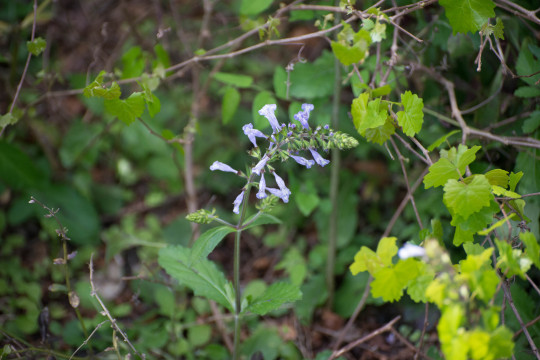



Four edible plants native to Florida.
Salvia Lyrata, or Lyreleaf sage, a plant historically used by natives for medical purposes, is used for teas mainly. I haven't tried it but the whole plant is edible.
Stachys Floridana, or Florida Betony is a beautiful wildflower that produces white tubers that look a bit like grubs but taste almost like radishes, crispy and fresh.
Sambucus Nigra, or Elderberry /Elderflower depending on what stage it's in, is used for a nice tea in the flowering stage and syrups and jellies are made from the berries. They're also nice to look at.
Smilax auriculata, or Earleaf Greenbrier is pictured here, but all species are edible and have the same basic look. These are considered a nuisance by a lot of gardeners but they're my favorite from this list. The soft new growth at the end of vines look like asparagus and taste just as good in my opinion, which is where one common name, wild asparagus, comes from. In the spring you can eat whole meals of this stuff right off the plant just walking down a hiking trail, all you have to do is snap it off right where it wants to and chow down
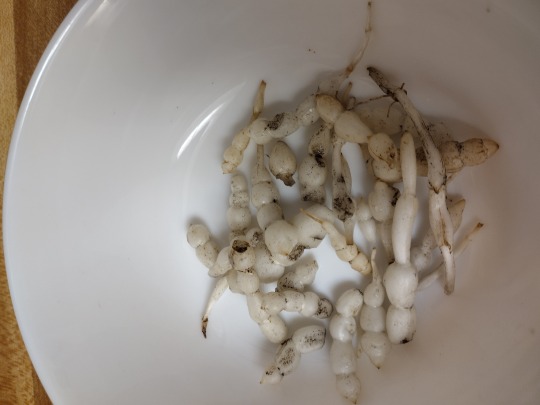

#nature#photography#original photographers#photographers on tumblr#florida#cottagecore#flowers#edible plants#education#native plants#wild food
18 notes
·
View notes